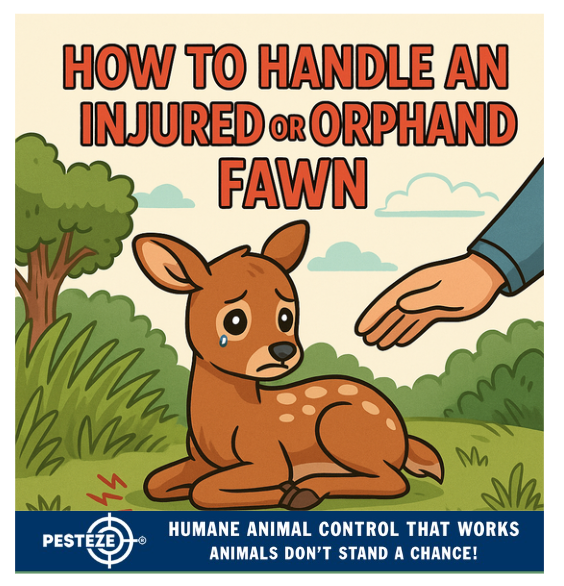HOW TO HANDLE AN INJURED OR ORPHANED FAWN

HOW TO HANDLE AN INJURED OR ORPHANED FAWN
SUMMARY
Finding a fawn alone can be emotional, but intervening without proper knowledge can harm more than help. This guide explains how to safely respond when you encounter an injured or orphaned fawn and when to call professionals.
FEATURES
-
Observe from a distance: Many “abandoned” fawns are not truly orphaned.
-
Do not touch unnecessarily: Human scent can interfere with natural care.
-
Identify signs of injury: Limping, bleeding, or weakness require urgent help.
-
Contact wildlife rehabilitators: Professionals are trained for proper care.
-
Keep pets and people away: Stress can worsen the fawn’s condition.
-
Know when to leave it alone: Often, the best action is no action.
GUIDE DESCRIPTION
Every spring and summer, people encounter fawns resting quietly in tall grass, near homes, or in wooded areas. It is natural to feel concern, especially if the fawn appears to be alone. However, it’s important to understand deer behavior before taking action.
Mother deer (does) often leave their young alone for several hours while they forage for food. During this time, the fawn will remain still and quiet to avoid attracting predators. This means that most “orphaned” fawns are not abandoned at all—mom is usually nearby and will return. Intervening in these situations can do more harm than good.
The first step is to observe from a distance. If the fawn is lying quietly, with no visible signs of distress or injury, it is best to leave it alone. Do not attempt to pick it up, move it, or feed it. Human scent or interference can confuse the mother and may reduce the fawn’s chances of survival.
If you notice clear signs of injury, such as limping, bleeding, visible wounds, difficulty breathing, or unresponsiveness, the situation requires professional help. In these cases, immediately contact your local wildlife rehabilitator, animal control, or a licensed rescue center. These professionals have the training and permits to provide proper medical care.
It’s also crucial to keep people and pets away from the fawn. Dogs may approach out of curiosity, which can frighten or harm the young deer. Stress alone can weaken a fawn, so maintaining a calm, quiet environment is essential.
One of the most common mistakes is attempting to feed or nurse the fawn. Cow’s milk, goat’s milk, or formula substitutes can cause digestive distress and even death. Only licensed rehabilitators should provide food or medical treatment.
In most cases, the best response is to do nothing. If the fawn looks healthy, it’s almost always waiting for its mother. Unless you’ve seen the doe dead nearby or the fawn is injured, resist the urge to intervene.
By understanding deer behavior and knowing when to call professionals, you can ensure that fawns receive the best chance at survival.
- Saneeth Thota


Comments 0